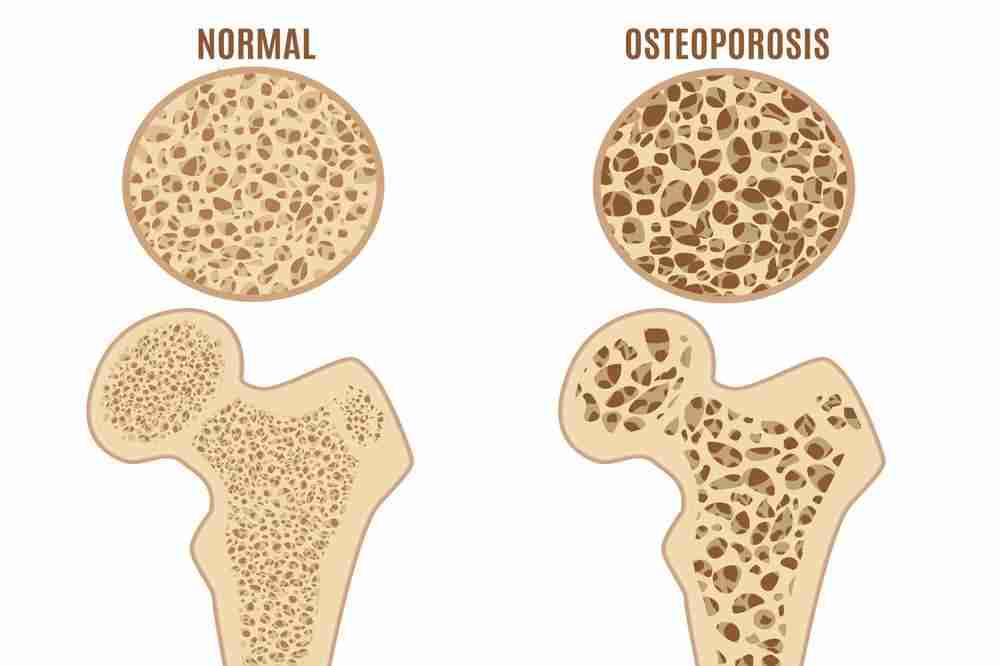Other types of arthritis:
Among the many types of arthritis, the following are the major ones. It is important to distinguish between different types of arthritis in order to steer treatment and management in the proper direction.
- Rheumatoid arthritis:
It is an autoimmune disorder where the autoantibodies start attacking the body’s own tissue, in this case, the joints. This involves multiple joints with soreness, redness and pain.
- Psoriatic arthritis:
This type of arthritis involves skin along with the joints. The skin of the joints like elbow or knee or of the genital area may form raised scaly patches. This may be followed by symptoms of arthritis.
- Gout:
This form of arthritis is characterized by joint pain and stiffness, mostly involving the big toe, secondary deposition of uric acid crystals in the joint space.
Pathophysiology

Pathophysiology of osteoarthritis can be explained simply as an imbalance in the regenerative and degenerative processes of cartilage on a metabolic and biochemical level, which can be precipitated by various factors like age, gender, joint use and trauma, and other causative agents. Environmental factors leading to stress on synovial joints like injury, misuse and trauma etc. Interplay with natural predisposing factors like gender and age to cause the pathology to set in.
Normal process of cartilage degradation vs. OA
Normally a process of degeneration causes old cartilage cells to be replaced by the new cells. However, in OA which is marked with inflammatory changes, there is a release of certain inflammatory cytokines like metalloproteinase MMPs. Under the influence of these chemicals, there is also an initial surge in the number of chondrocytes, the cartilage cells. The inflammation is always accompanied by release of enzymes, which result in dissolution of cartilage. These degenerative changes which would normally be accompanied by regenerative processes result in loss of cartilage at the ends of the bone in OA. Similar degenerative changes are also seen in the bone tissue. However, exactly how these cytokines are initiated is still hypothetical. One view suggests that there is an increase in the number of receptors responding to these chemicals on the joint surfaces.
The effect of cartilage loss
The Cartilage at the ends of the bones serves as a shock absorber. It is composed of elastic fibers which allow for the range of motions that occur at the particular joints. With this lubricating surface lost, the adjacent bones face a lot of friction at the joint. This results in the bone, which was underlying that cartilage, to undergo progressive sclerosis. This is also accompanied by the formation of cysts at the ends of the bone. These cysts cause the bone end to become thickened and abnormally morphed. When set in motion, the tendons and ligaments attached to the ends of the bone cause excessive stress on bones, which explains the symptoms commonly accounted, like pain and stiffness. The end result is fusion of bones at the joint with loss of joint space. Initially, the loss of cells triggers synthesis of new bone cells. But this new bony outgrowth is irregular and settles around the joint and results in the formation of osteophytes. The entire process may take decades to complete, but the symptoms may prevail throughout due to the progressive loss of cartilage.
There are chemical factors which counteract the effect of inflammatory cytokines to balance the regenerative process by stimulating the synthesis of chondrocytes. This balance is offset in osteoarthritis in favor of degeneration. These changes are different from those of the aging cartilage. The difference is seen in the water content, the activity of degrading enzymes and the concentration of specific degraded type2 collagen fibers in the aging and osteoarthritis diseased collagen, marking OA as a distinct pathological process. New research may offer further insight into the pathology may help in devising more favorable treatment plans.
